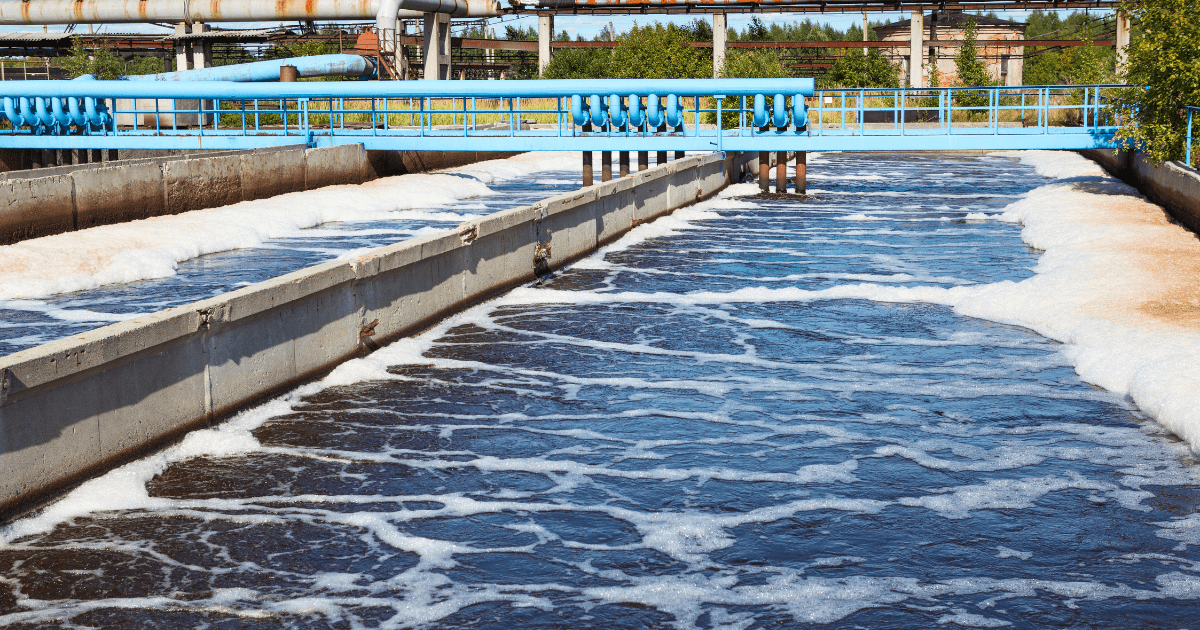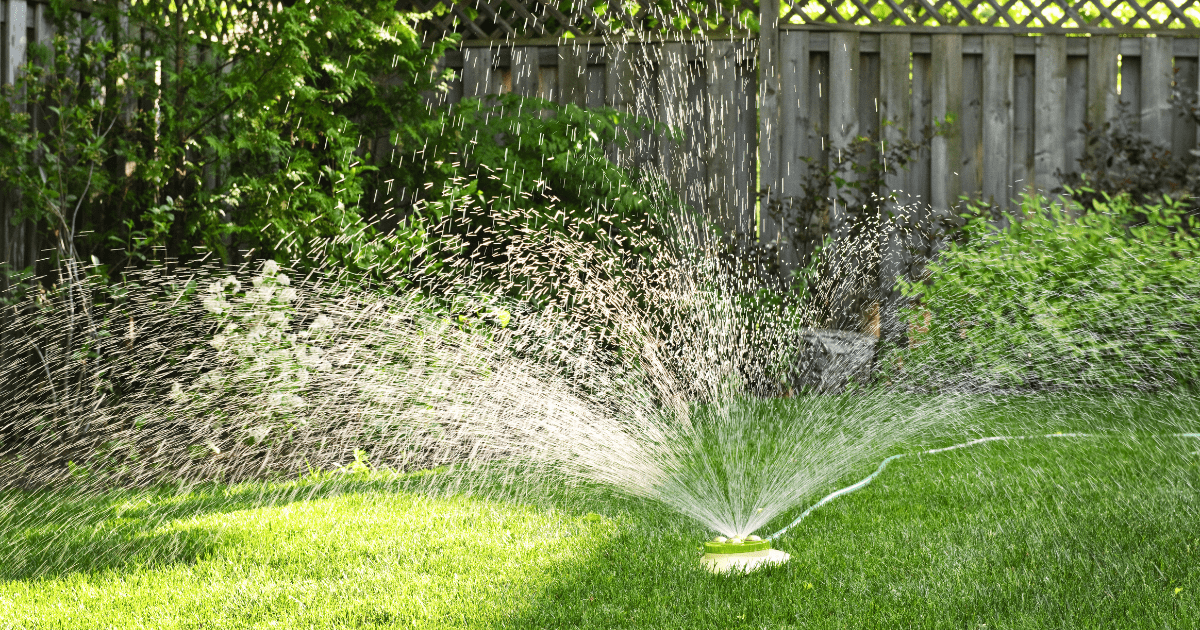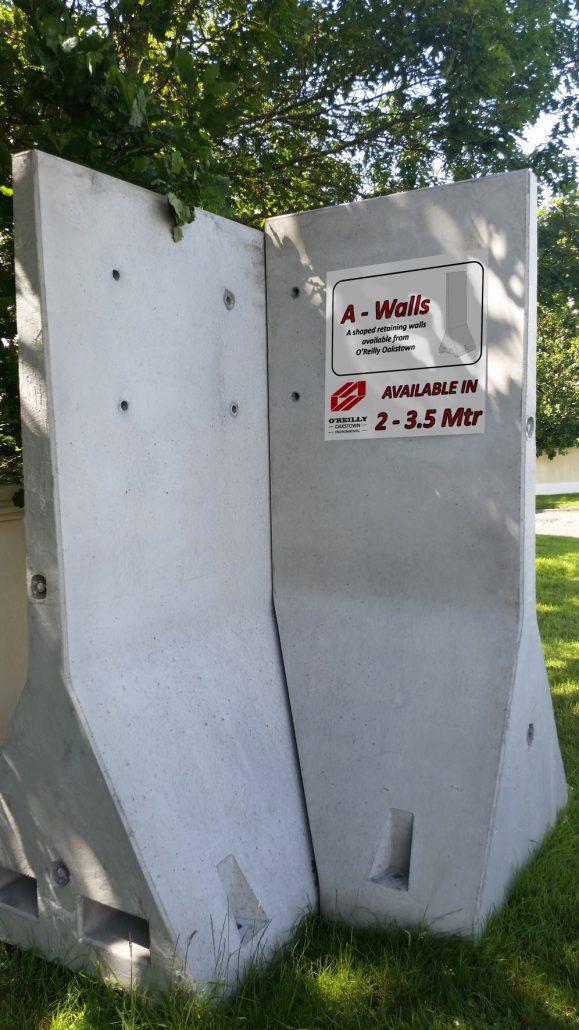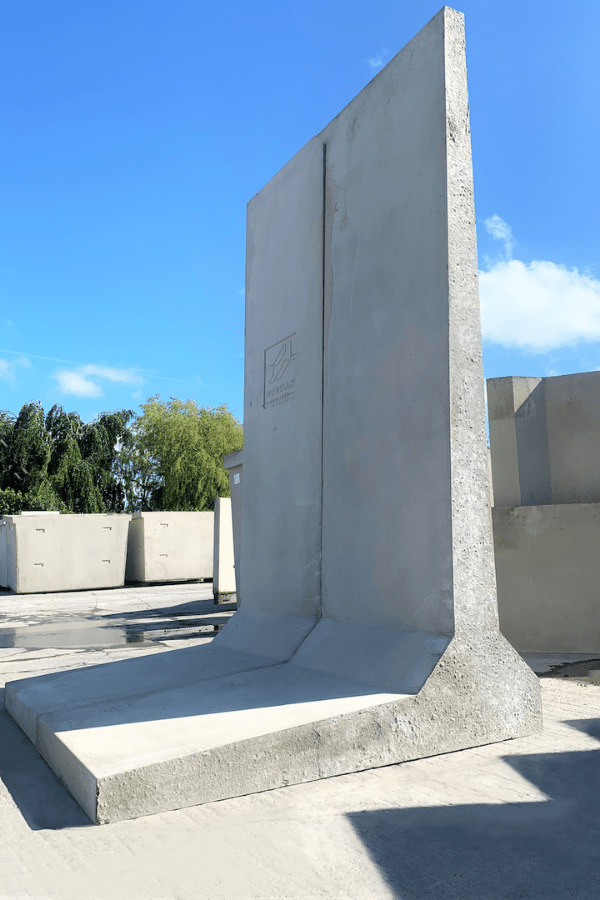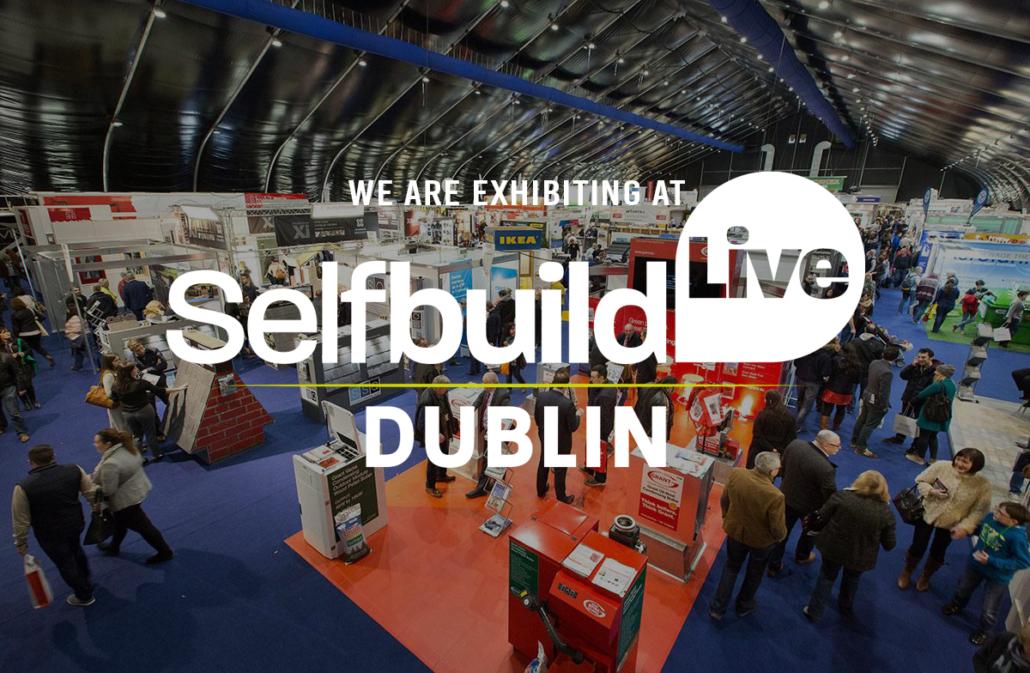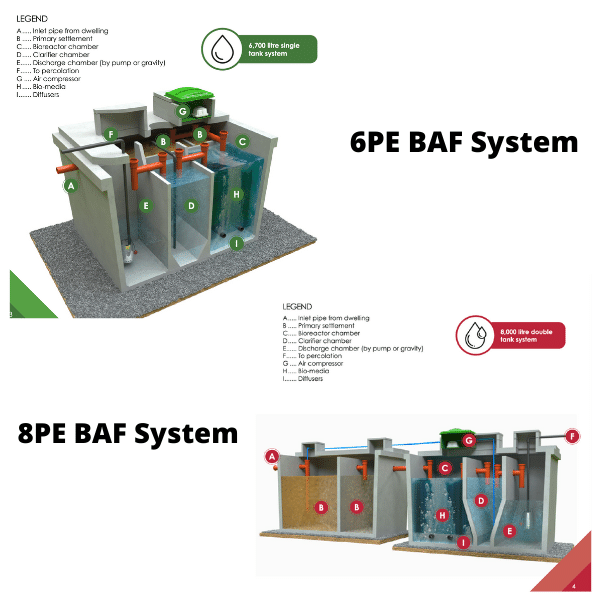We are thrilled to announce that O’Reilly Oakstown will be attending the PED System Conference & Golf Day 2024, a key event that brings together industry professionals from across the wastewater treatment sector. This exciting gathering is set to take place at the beautiful Castle Dargan Estate, a venue that not only offers a stunning backdrop but also serves as a real-world example of the innovative wastewater solutions we advocate for.
What to Expect
The event will focus on the latest advancements in wastewater treatment technology, with a particular emphasis on the advantages of integrating our MBBR (Moving Bed Biofilm Reactor) wastewater treatment solution with the state-of-the-art Precision Effluent Dispersal (PED) system. This combined approach offers unparalleled benefits for both commercial and domestic applications, ensuring that effluent is treated and dispersed in a manner that is both environmentally sustainable and fully compliant with the latest regulations.
Why the PED System?
The PED system is a game-changer in wastewater treatment. Unlike traditional methods that rely on river and stream dispersal, the PED system provides a controlled and sustainable solution that guarantees legislative compliance. The system is fully licensed and approved by the Environmental Protection Agency (EPA), making it an ideal choice for modern wastewater management.
Join Us
We invite you to join us at this pivotal event to learn more about how our solutions can be applied to your projects. Whether you’re involved in commercial development, residential planning, or environmental compliance, this conference will provide valuable insights into the future of wastewater treatment.
Don’t miss out on this opportunity to connect with industry leaders, explore innovative technologies, and play a round of golf on one of Ireland’s premier courses.
Imagine a wastewater treatment system that’s not only highly efficient but also eco-friendly, utilising the natural power of coconut husks and peat moss. The Ecoflo Coco Filter septic system is a revolutionary solution for both homes and businesses, offering superior purification without relying on electricity. Say goodbye to traditional septic systems and embrace an innovative, sustainable approach that benefits you and the environment.
Step-by-Step Process of the Ecoflo Coco Filter System
1. Septic Tank Setup
The Ecoflo system starts with a septic tank, which is a key component in managing household wastewater. This tank collects raw sewage and greywater from your home, effectively separating liquid waste from solids.
2. Biofilter Installation
At the heart of the Ecoflo septic system is the compact biofilter. This specialised tank can be constructed from various materials, including:
- Polyethylene
- Concrete
- Fiberglass
The choice of material depends on your specific site conditions, ensuring durability and efficiency.
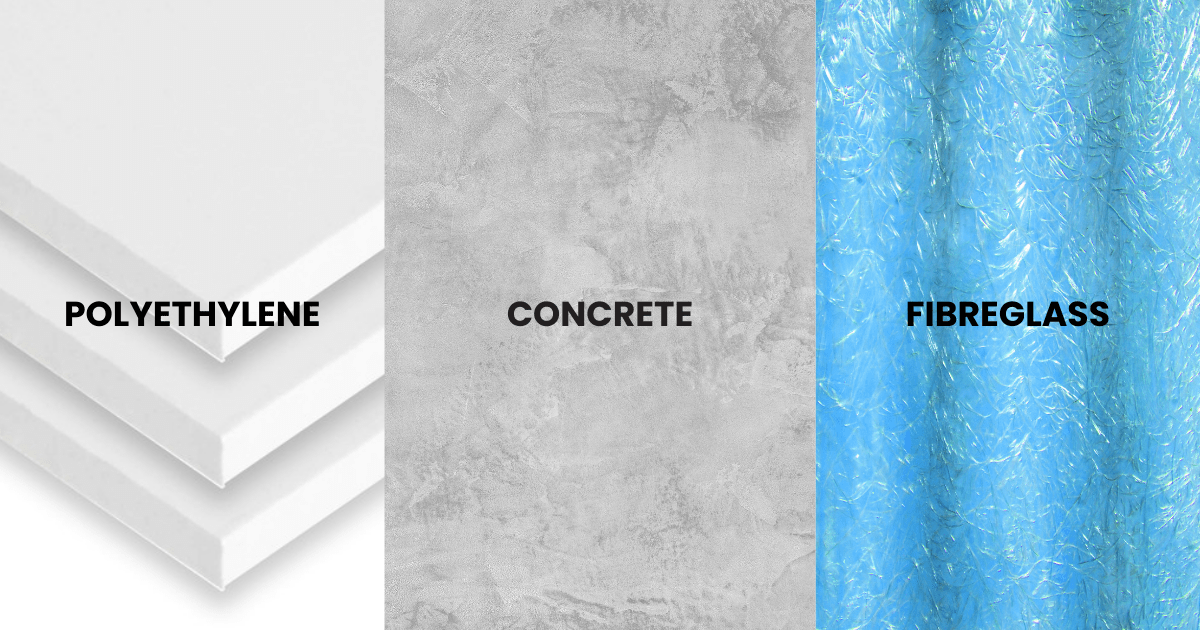
How the Filtration Process Works
1. Initial Separation:
The process begins in the septic tank, where solid waste is separated from liquid waste. The liquid waste, now partially treated, flows into the biofilter for further purification.
2. Physical Filtration:
As the wastewater passes through the coconut husk and peat moss filter, these materials act as a physical barrier, trapping larger particles and pollutants. The unique structure of the coconut fibres creates a maze-like pathway that captures contaminants effectively.
3. Biological Treatment:
Within the filter, naturally occurring microorganisms thrive on the surface of the coconut husk and peat moss. These beneficial microbes feed on organic matter, breaking down harmful substances such as pathogens, nutrients, and other pollutants present in the wastewater.
4. Chemical Filtration:
The filtering media also facilitates chemical processes that help neutralise pollutants. The tannins and lignins present in coconut husk and peat moss contribute to the absorption of heavy metals and other contaminants, further purifying the water.
Final Effluent:
The treated water that exits the system is significantly cleaner and safer for release into the environment. The Ecoflo Coco Filter achieves impressive reductions in Biochemical Oxygen Demand (BOD), suspended solids, nitrogen, ammonia, and pathogens, making it one of the most effective natural treatment systems available.
Eco-Friendly and Sustainable Advantages
- Zero Energy Consumption: The Ecoflo system operates without electricity or mechanical components, reducing energy use and lowering carbon emissions. This energy-free operation makes it an ideal solution for off-grid locations and areas with unreliable power supply.
- Minimal Environmental Footprint: With its small physical footprint, the Ecoflo system can be installed in a variety of settings, minimising land disruption and maintaining the natural landscape.
- Long Lifespan: The durability of the coconut and peat moss media ensures a long service life of up to 15 years or more, reducing the need for frequent replacements and minimising waste.
- Reduction of Waste: By utilising agricultural byproducts like coconut husks, the Ecoflo system helps divert waste from landfills, supporting a circular economy and promoting resource efficiency.
- Compliance with Environmental Standards: The Ecoflo Coco Filter meets and surpasses the most stringent environmental regulations, ensuring that treated wastewater is safe for discharge into the environment.
Biological Wastewater Treatment
Naturally occurring microorganisms in the filter media break down harmful substances, ensuring that only treated and purified wastewater exits the system. This process effectively reduces pollutants, making it an environmentally friendly option for wastewater management.
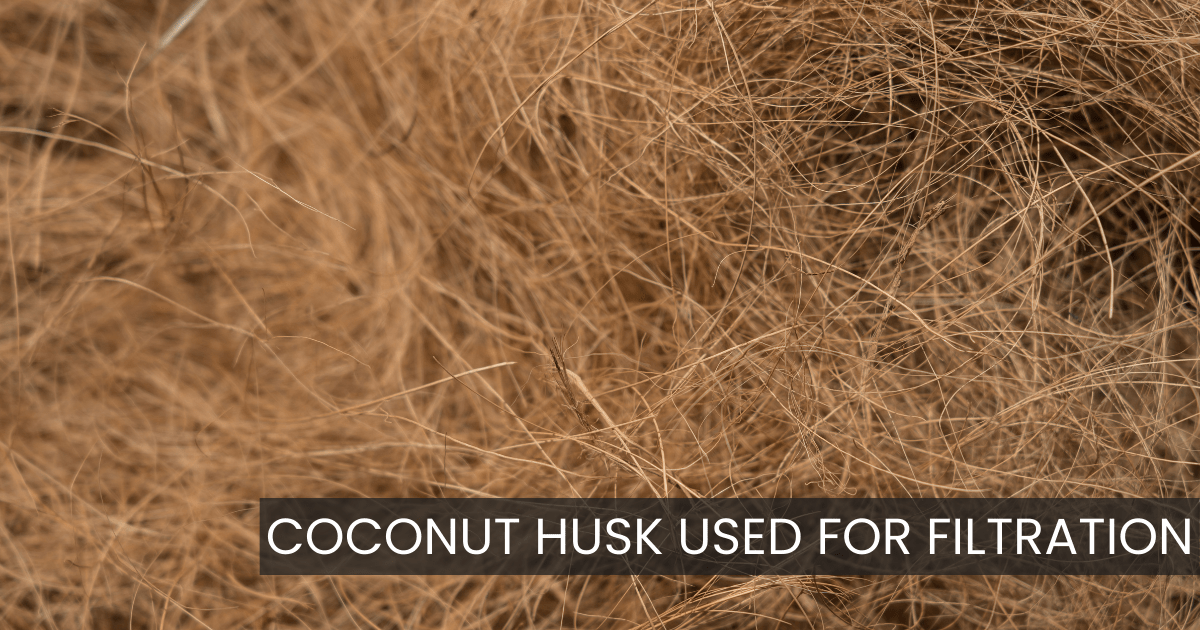
Key Benefits of the Ecoflo Filter
- Compact Footprint: Takes up minimal space, perfect for small sites.
- Energy-Free Operation: Functions without electricity or any power source.
- Quick Installation: Designed for fast setup and immediate use.
- Affordable: Provides a budget-friendly option for effective wastewater treatment.
- Factory-Assembled: Built for quality assurance and consistency.
- Certified Performance: Meets PIA Germany standards for water treatment.
- High Reduction Rates:
-70% reduction in BOD (Biochemical Oxygen Demand) and suspended solids.
-85% reduction in total nitrogen and ammonia.
-Log 4 kills (99.9% reduction) of pathogens.
- Long-Lasting Media: The coco media filter lasts up to 15 years or more.
Biofilter Material Options:
The biofilter tank can be constructed from various materials to suit site-specific requirements:
- Polyethylene:
- Lightweight and easy to handle.
- Resistant to corrosion and chemical damage.
- Suitable for a wide range of environmental conditions.
- Concrete:
- Offers superior strength and durability.
- Ideal for high-traffic or heavy-load areas.
- Provides stability in sites with fluctuating water tables.
- Fiberglass:
- Combines strength with reduced weight.
- Resistant to chemical and environmental degradation.
- Well-suited for areas with difficult access or limited space.
Eco-Friendly Benefits of the Ecoflo System
The Ecoflo Coco Filter system stands out for its eco-friendly design and operation, offering numerous environmental advantages:
- Natural Resources: By utilizing coconut husk and peat moss, the system relies on renewable, sustainable materials that reduce the environmental impact of wastewater treatment.
- Energy Efficiency: The system operates without electricity or mechanical components, minimising energy consumption and reducing carbon emissions.
- Low Maintenance: The long lifespan and durability of the filtering media decrease the need for frequent maintenance and replacement, reducing waste and promoting sustainability.
- Environmental Protection: The Ecoflo system meets stringent environmental standards, ensuring that treated wastewater is safe for release into natural ecosystems, and protecting groundwater and surface water quality.
Why Choose Ecoflo for Your Septic Needs?
The Ecoflo Coco Filter system is a top choice for those seeking a natural, energy-efficient, and reliable septic treatment solution. Whether you’re dealing with challenging site conditions or looking for an environmentally-conscious option, Ecoflo offers the perfect balance of performance and sustainability.
Conclusion
The Ecoflo Coco Filter system’s combination of a robust septic tank setup and advanced biofilter installation provides a reliable and sustainable solution for wastewater management. Its use of natural materials and energy-free operation make it an ideal choice for environmentally conscious homeowners and businesses seeking an effective, eco-friendly alternative to traditional septic systems.
In an era where global water scarcity poses an increasingly critical challenge, the significance of reusing wastewater emerges as a crucial solution with environmental benefits. As increasing populations and industrial activities strain limited water resources, the conventional linear model of water consumption and disposal becomes unsustainable. The practice of wastewater reuse not only addresses the escalating demand for freshwater but also mitigates the adverse ecological impacts associated with conventional disposal methods. By transforming wastewater into a valuable resource, we not only strengthen water security but also contribute to a more sustainable environment, fostering a balance between human needs and the health of our ecosystems. This shift towards wastewater reuse embodies a crucial step in crafting a more sustainable future for our planet.
Below are just some examples of how wastewater can be reused:
Agricultural Irrigation:
Agricultural irrigation involves the utilisation of treated wastewater to nourish crops with essential nutrients, contributing to sustainable farming practices. By incorporating treated wastewater into the irrigation process, valuable freshwater resources are conserved, and the dependence on traditional irrigation water is reduced. This approach not only supports the growth of crops by supplying vital nutrients but also highlights an effort to address water shortage concerns in agriculture.
Industrial Processes:
Industrial processes across diverse sectors require substantial water usage. Treated wastewater emerges as a viable solution in these contexts, mitigating the demand on freshwater sources. In particular, industries like manufacturing and energy production can optimise sustainability by incorporating treated wastewater into cooling processes. This dual-purpose approach not only addresses the water needs of industrial operations but also contributes to the conservation of freshwater resources.
Landscaping and Recreational Uses:
Reused water plays a huge role in enhancing sustainability in landscaping, parks, golf courses, and various recreational areas by serving as an alternative water source. This practice significantly decreases the reliance on potable water for non-potable purposes. By incorporating reused water into the irrigation and maintenance of such spaces, a more efficient and responsible water management strategy is achieved, contributing to the conservation of valuable drinking water resources.
Urban and Industrial Cooling:
In urban and industrial environments, the utilisation of treated wastewater for cooling purposes proves to be a beneficial practice, notably in power plants and manufacturing facilities. By incorporating treated wastewater into the cooling processes of these settings, there is a dual advantage of efficiently meeting cooling requirements while simultaneously alleviating the strain on freshwater resources. This approach highlights a sustainable and resource-conscious strategy.
The imperative of reusing wastewater stands out as a solution to address the escalating global water scarcity crisis. Faced with the challenges of growing populations and expanding industrial activities, the conventional linear model of water consumption and disposal proves unsustainable. Wastewater reuse emerges as a crucial step towards crafting a sustainable future, offering not only a response to the rising demand for freshwater but also a means to mitigate ecological impacts associated with traditional disposal methods. The versatility of wastewater reuse is evident in applications such as agricultural irrigation, industrial processes, landscaping, and urban cooling, showcasing its potential to alleviate water shortage concerns across diverse sectors. Embracing wastewater reuse fosters sustainable farming practices, reduces the strain on freshwater sources in industries, enhances water management in recreational areas, and optimises cooling processes in urban environments. This multifaceted approach not only conserves precious freshwater resources but also exemplifies a commitment to responsible and resource-conscious strategies, guiding us towards a more resilient and environmentally conscious future in the face of global challenges.
In a world where environmental consciousness has become dominant, Oakstown Environmental takes pride in leading the way towards a sustainable future. One of our key initiatives in this regard is the incorporation of Ecocem GGBS (Ground Granulated Blastfurnace Slag) into our products. Up to 30% of EcoCem mix is used in our prestressed products, precast concrete and paving products. Ecocem GGBS is a high-performance alternative to traditional cement that not only enhances technical performance but also improves aesthetics while significantly reducing our carbon footprint. In this blog, we will delve into the amazing features and benefits of Ecocem GGBS and explore how it is revolutionising various industries.
The Power of Ecocem GGBS:
Low Carbon Footprint: At Oakstown Environmental, we are committed to minimising our environmental impact. Ecocem GGBS aligns perfectly with this mission as it is an industrial by-product diverted from landfill and up cycled into a low carbon cement replacement. Traditional cement production is known for its greenhouse gas emissions. By using GGBS, we reduce carbon emissions while improving the overall sustainability of our projects.
Increased Resistance to Chemical Attacks: Ecocem GGBS not only contributes to a greener environment but also enhances the longevity of your applications. It offers increased resistance to chemical attacks, making it ideal for projects where durability and strength are essential.
Aesthetic Finish: The appearance of your construction projects matters. Ecocem GGBS enhances the aesthetic finish of your applications, ensuring that they not only perform well but also look impressive. This is particularly important for architectural concrete projects where visual appeal plays a significant role.
Ideal for Producing Architectural Concrete: Speaking of architectural concrete, Ecocem GGBS is the perfect choice. It allows for the creation of high-quality, visually appealing architectural concrete, making it a preferred option for architects, designers, and builders.
How Does Ecocem GGBS Work?
GGBS is a by-product of iron manufacture. It is created when molten Blastfurnace slag is rapidly quenched with water, forming Granulated Blastfurnace Slag (GBS). Ecocem GGBS is produced by drying and grinding GBS. When combined with cement, it creates superior, longer-lasting concrete. In fact, I.S EN 206-1 permits a replacement rate of up to 70%, highlighting its effectiveness in reducing the use of traditional cement.
EcoCem and The O’Reilly Group:
Since 1995 O’Reilly Concrete has been using Ground Granulated Blast-Furnace Slag from Ecocem, in our concrete mixes. As it has a carbon footprint of 55Kgs per tonne compared to that of Normal Portland Cement-970Kgs, it has allowed us to cut our carbon emissions by up to 6,444 tons of CO2 per annum. We use up to 30% GGBS in our concrete mix for our prestressed products, precast concrete, and paving products. A cement with a carbon footprint up to 16 times lower than other cements. One project alone in 2021 that was completed using Ecocem GGBS saved around 34 tonnes of CO2, equivalent to 838 trees growing for 10 years!
Conclusion:
Incorporating Ecocem GGBS into our products at Oakstown Environmental is a testament to our commitment to sustainability and performance excellence. This high-performance alternative to traditional cement is transforming industries, offering not only technical advantages but also environmental benefits. As we continue to embrace eco-friendly practices, we invite you to join us in this green revolution by choosing Ecocem GGBS for your next project. Together, we can build a brighter and more sustainable future for generations to come.
Precast A Walls: Enhancing Agricultural and Storage Solutions | Oakstown Environmental Guide
When it comes to efficiently containing produce, products, and materials, Precast A Walls emerge as a versatile and valuable solution. In this overview, we’ll explore the applications and benefits of Precast A Walls, especially in the agricultural and storage sectors.
The Ingenious Y-shaped Design:
The defining feature of Precast A Walls lies in their Y-shaped configuration. This design prevents material blockages and facilitates loading processes. The Y-shaped wall’s toe sidesteps collisions with loading shovels, streamlining the loading process. Moreover, this design effectively prevents materials from becoming lodged within the wall, ensuring smooth workflow and reduced downtime.
Agricultural Applications:
In agriculture, Precast A Walls offer solutions to diverse storage and partitioning needs:
– Bulk Storage: Grain, silage, aggregates, or recycled materials find secure containment.
– Partitioning Sheds: Create designated spaces for various operations, enhancing efficiency.
– Compost Storage: Proper aeration and containment aid the composting process.
– Storage of Agricultural Products: Facilitate organized storage of fertilizers and equipment.
Storage Solutions Beyond Agriculture:
Precast A Walls excel in various storage scenarios:
– Building Material Storage: Secure and organized solution for construction materials.
– Recyclables Storage: Reliable containment for recyclable materials.
– Temporary Walls: Quick, modular partitioning solution.
Conclusion:
The innovative design and multifaceted applications of Precast A Walls make them indispensable in agriculture and storage. These walls enhance functionality, streamline loading, and optimize space, benefiting various operations.
L-Walls: Revolutionizing Construction and Beyond | Unlocking Versatility
In the dynamic world of construction and civil works, innovation continues to shape solutions. L-Walls, movable concrete retaining walls, have transformed multiple industries. Explore the uses, benefits, and versatility of L-Walls in this post.
The Evolution of L-Walls: Redefining Retaining Structures:
L-Walls have introduced a new era of construction possibilities, offering adaptability and efficiency. Crafted from high-quality concrete, these movable L-shaped retaining walls are an alternative to traditional fixed walls.
Unveiling the Dimensions: Height Variants for Every Need:
L-Walls adapt to requirements with heights ranging from 1.5 to 4.0 meters, catering to diverse projects.
Swift Solutions, Cost-Effective Construction: The L-Wall Advantage:
L-Walls save time and money in construction. They offer seamless installation and robustness, ensuring longevity.
Diverse Applications: Unleashing the Potential of L-Walls:
L-Walls transcend industries in applications such as silage walls, compost storage, and more. They add aesthetics to functional spaces like split level driveways and gardens.
Conclusion:
L-Walls represent a leap in construction practices, offering adaptability and efficiency. Their flexible heights and diverse applications have transformed projects across industries, showcasing engineering excellence.
In today’s world, our environmental footprint is more important than ever. One key aspect of our daily lives that plays a significant role in this is our wastewater system. But what happens if our wastewater system fails? What are the implications for our health, our wallets, our environment, and our community? In this blog, we’ll be exploring these questions and more, revealing the true cost of neglecting our wastewater systems.

The Domino Effect: Health Risks from a Failing Wastewater System
Imagine waking up one morning to discover a significant health hazard right in your garden. A failing wastewater system can create such a disaster, exposing your family to harmful bacteria and pathogens, which can cause serious diseases, such as Hepatitis and Dysentery.
The untreated wastewater from failing systems is a breeding ground for these health hazards, which can infiltrate your water supply and create unsafe living conditions. Awareness of these potential dangers is the first step in preventing them.
Financial Fallout: The Unexpected Costs of a Failing Wastewater System
The consequences of neglecting your wastewater system aren’t just health-related, they can also be financial. The costs of addressing a failing system can escalate quickly, from hefty fines for environmental violations to the expense of emergency repairs and system replacement.
Proper maintenance can help avoid these unforeseen costs. An upfront investment in a quality system from O’Reilly Oakstown Environmental can provide peace of mind, safeguarding your home and your wallet from future burdens.
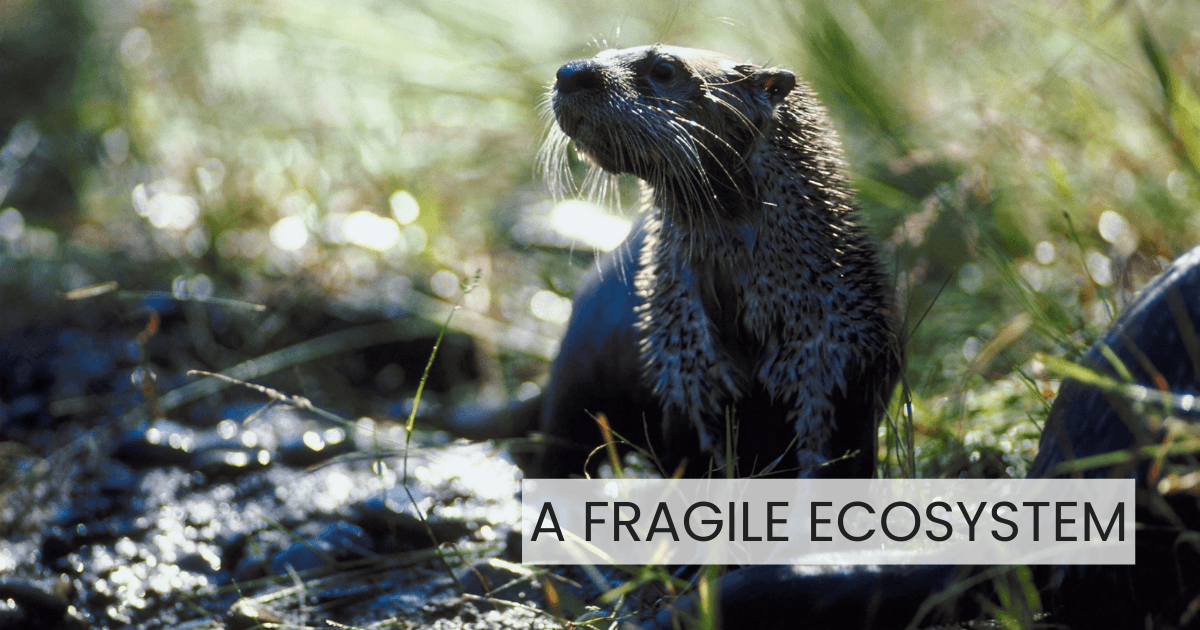
A Fragile Ecosystem: Environmental Impact of a Failing Wastewater System
The repercussions of a failing wastewater system extend beyond your home, reaching local ecosystems. Untreated wastewater can leak into rivers and lakes, disrupting delicate aquatic ecosystems, promoting algal blooms, and threatening wildlife.
Every one of us has a responsibility to protect the environment. Investing in a robust wastewater treatment system is not only a commitment to your family’s health and safety, but also a commitment to preserving our precious ecosystems.
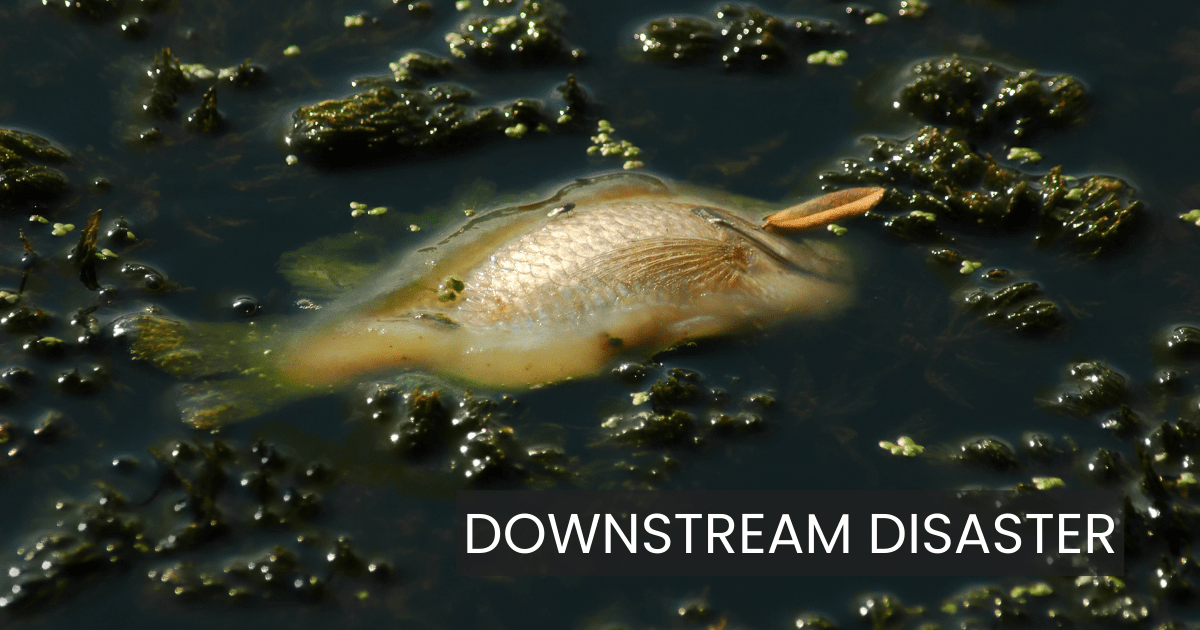
Downstream Disaster: How Failing Wastewater Systems Affect the Community
The damage from a failing wastewater system is not limited to personal inconvenience, it can result in a community crisis. The pollution caused by untreated wastewater can harm local economies, especially in areas dependent on fishing or tourism.
An unreliable wastewater system can ruin the image of a community, discourage visitors, and make it less desirable for potential residents. By ensuring that our wastewater systems are functioning properly, we can contribute to a healthier and more vibrant community.
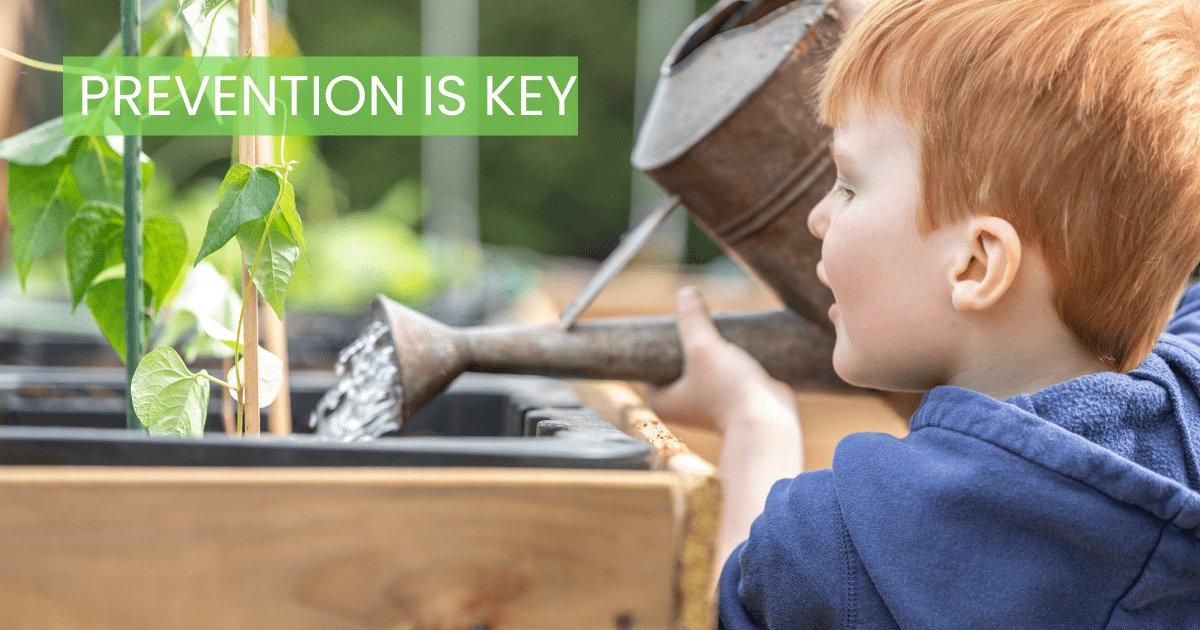
Prevention is Key: Avoiding the Nightmare of a Failing Wastewater System
Prevention is indeed better than cure when it comes to wastewater system maintenance. Recognising the signs of a failing system early can save you from bigger issues down the line. Regular checks, proper maintenance, and immediate action at the first sign of trouble can help avoid the nightmare of a failing system.
Investing in a reliable wastewater treatment system, like the ones offered by O’Reilly Oakstown Environmental, is an investment in a safe and healthy future for your family and community.
Don’t wait for the worst-case scenario to occur. Take action now to prevent potential disasters. Remember, prevention is key, and we are here to help. Contact us today for a system check or more information.
Don’t wait for disaster to strike. Get in touch with us today and ensure your wastewater system is up to the task. Prevention is key, and we are here to assist you every step of the way.
Call us at +353 (0) 46 943 1389, email us at info@oreillyoakstown.com or schedule a system check. Your environment is counting on you!
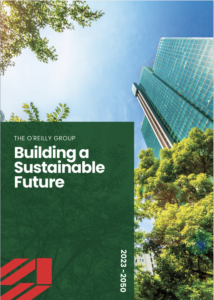 We’re proud to unveil the O’Reilly Group’s comprehensive roadmap to Net Zero by 2050!
We’re proud to unveil the O’Reilly Group’s comprehensive roadmap to Net Zero by 2050!
This plan is our steadfast commitment to advancing sustainability within our operations and contributing to a greener planet.
- Afforestation: We’ve planted 15,000 trees at our Oakstown plant, setting a clear path towards creating a sustainable environment, with plans to expand afforestation to other facilities.
- Sustainable Concrete: We’re implementing processes like carbon capture and the use of recycled water to make our concrete production even more environmentally friendly.
- Offsite Manufacturing: Our innovative Architectural Wall Panels not only expedite the building process but also reduce on-site waste, making construction more sustainable.
- Tech-Driven Efficiency: We’re leveraging technology like BIM and advanced software to optimise operations, reduce waste, and provide high-quality, sustainable products to our customers.
- Renewable Energy: We’re shifting towards generating 100% of our electricity from renewable sources, kicking off with solar panel installation across all production buildings.
We’re proud to be taking significant strides towards achieving Net Zero by 2050. To read more about our commitments and plans, check out the full sustainability plan below, or if you would like a high-res copy to print or share please contact us here.
Together, we are building a sustainable future!

What a great weekend at Selfbuild Live in Dublin 5-7 May 2023!
The energy, creativity, and commitment to building better, smarter, and more sustainable homes were palpable.
THANK YOU to all of you who took the time to visit the O’Reilly Oakstown Ltd stand, learn about our wastewater solutions, and sign up for your free site survey. Rest assured, one of our wastewater experts will contact you soon to help you plan your next steps.
Don’t hesitate to reach out if you have any questions, and stay tuned for more updates.
Event Features
Selfbuild Live Dublin is the ultimate showcase for people who are building, extending, improving or simply decorating their home. Visitors are presented an abundance of ideas, inspiration and advice via 1-2-1 Clinics, Theatre talks and hundreds of Irish based exhibitors.
- 120+ Local Exhibitors
- 20+ Expert Speakers
- Bootcamp Theatre
- SelfBuild Theatres
- Expert Advice
- Modern Building Systems Area
- Steel Suppliers
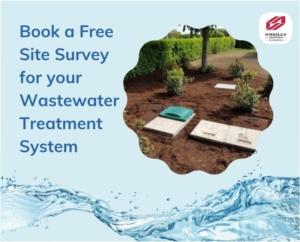 Are you planning to install a new wastewater treatment system on your property? If so, our team of experts can provide a site survey & quote, to help you to find the right solution for your wastewater treatment system.
Are you planning to install a new wastewater treatment system on your property? If so, our team of experts can provide a site survey & quote, to help you to find the right solution for your wastewater treatment system.
We understand the importance of selecting the right system for your specific needs and ensuring that it is designed and installed to meet regulations, and provide only the best for your new home or upgrade.
That’s why we’re offering a FREE site survey to help you make the most informed decision about your wastewater management solution.
Our Free Site Survey includes:
- Assessment of the existing tank if you have one, and a review of your site specific report (which you should have if it’s a new build) and we will advise you on the best course of action from there.
- In the case of an upgrade where there is a poorly functioning septic tank we assess it and recommend a course of action from there. This may mean you need to do a percolation test to establish what the ground conditions are. In such case we can usually recommend a local site assessor and diggerman to help you with this.
- We then recommend the best system for your needs, supply and install the system.
Book your Free Site Survey Today! Get in touch with us on our contact form below:
Our BAF Treatment Systems
Sign up to our Mailing List below for information & occasional offers
Upgrading from a Septic Tank
There are many reasons why you may consider upgrading from a septic tank. The most common reasons are that the septic tank itself is of poor quality and needs to be replaced, or that the percolation area surrounding the tank is of poor quality.
Occasionally, the percolation area just needs a pump or pump chamber, which can be supplied and fitted by our service team here at Oakstown. However if these issues are not dealt with they can cause serious pollution problems which are not only harmful to the environment, but are harmful to human health.
If you’re thinking about about upgrading from a septic tank to a sewage treatment system, some of the questions you might ask yourself are
- How old is your tank
- Have you outgrown your septic tank
- Are you having problems with your septic tank
What is the difference between a Septic Tank to a Sewage Treatment System?
A septic tank is the large underground tank used to store and treat wastewater (ie from sink & toilets, washing machines, dishwashers etc) from your home before it is released into the environment. The wastewater is broken down by naturally occurring organisms.
A sewage treatment system is a method of removing contaminants from that same wastewater before it is released into the environment, using a series of mechanical and biological processes. The effluent is then disinfected before it is discharged.
What are the Benefits of Upgrading from a Septic Tank?
There are a number of benefits for upgrading from a septic tank to a sewage treatment system.
- You may have outgrown your septic tank and need a larger sewage treatment system to accommodate your home & family in a safe and reliable way
- A septic tank separates the wastewater, while a sewage treatment system treats the wastewater by removing pollutants and contaminants before it leaves the tank.
- The water leaving a sewage treatment system is cleaner than that leaving a septic tank, therefore reducing the risk of water pollution and protecting the environment
- You need a bigger percolation area for a septic tanks. However percolation areas from septic tanks are far more prone to fail due to dirty slick water entering this area.
- A septic tank has to be emptied, or desludged, regularly to prevent problems.
- Overall using a sewage treatment system increases the efficiency of the wastewater treatment process, reduces odours and improves the overall health of the environment.
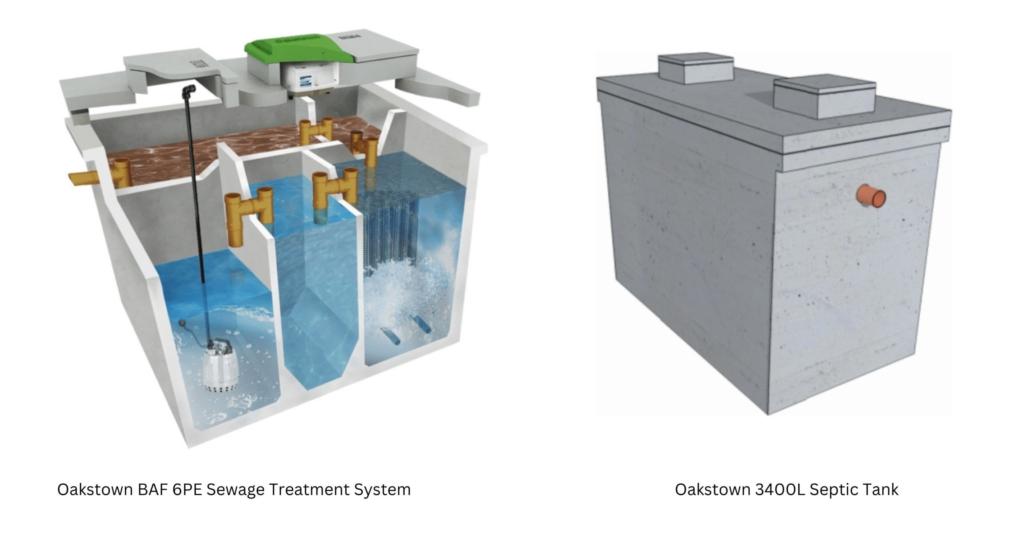
What is the Cost of Upgrading to a Sewage Treatment System?
In general the initial cost for a septic tank is cheaper than installing a sewage treatment system. You might say why would I pay more for a sewage treatment system?
Sewage Treatment Systems produce cleaner effluent and require less emptying. Septic tanks may be cheaper, but require more percolation space and more frequent emptying, and are more prone to causing problems for you & the environment.
Our concrete septic tanks start from €1150 +vat, you can purchase directly here.
The cost of a 6PE BAF sewage treatment system starts at €3,650 +vat – see product here.
Is there a Grant or Finance available?
The good news is that if you are considering upgrading from a septic tank, you may qualify for a grant.
Chat to our sales team today sales@oreillyoakstown.com and we’ll advise you of all your options.
Enquire about upgrading from a septic tank to a sewage treatment system today.
Call us on 046 9431389 or contact us here.
At O’Reilly Oakstown, we manufacture and install only the highest quality fully certified tanks. Our septic tanks comply with the CE certification EN 12566-1 and our sewage treatment plants comply with the CE certification EN 12566-3.
Sign up to our Mailing List below for information & occasional offers
All Domestic waste water treatment systems, such as septic tanks, collect, treat and discharge waste water from households that are not connected to public sewer systems. This waste water includes water which comes from toilets, showers, sinks, washing machines, dishwashers, etc.
How to register my septic tank
The following steps should be taken to register a septic tank:
- Find your local authority in Ireland on this link – Find My Local Authority.
- Visit protectourwater.ie where you can register and pay online. The cost of registering is €50.
- They will provide you with a Registration Certificate
Note:
- If it is a replacement systems and you have the initial system registered, you do not need to be re-registered.
- You must register a new system within 90 days of being commissioned
- If you are looking into getting a grant to repair or replace your treatment system in the future, your treatment system must be registered within a certain timeframe.
- Your system can be inspected in order to prevent any risk to the public and the environment. If you do not register your system and are convicted, you could be fined up to €5,000.
Can my septic tank be inspected?
Your waste water treatment system can be inspected by the local authority. They write and provide at least ten working days’ notice before the inspection.
If your waste water system is going to be inspected, you should have the following ready:
- Your waste water systems Registration Certificate
- Know where your waste water treatment system is located on your grounds
- Ensure you have any paperwork provided about your system’s installation or maintenance
- You can ask for the inspectors identification. Inspectors are appointed by the Environmental Protection Agency (EPA) and must show you if asked.
Read more on the Citizens Information Website.
What happens during the inspection?
- When the inspector arrives they will show you their ID card and authorisation, and ask you some basic questions about your system.
- They may look at your registration certificate and other paperwork.
- They will check manholes and pipework for leaks and that there isn’t an excess of sludge in the system.
- The drains will be checked to ensure that wastewater and greywater are entering the system where they can be treated, and that roofwater and surfacewater are not entering the tank as that may cause flooding.
- The percolation area will be checked for signs of ponding, as well as nearby ditches and drains for discharge pipes and signs of pollution.
- The system will also be checked for nuisance odours and noise.
What happens after the septic tank inspection?
If the inspection shows that the treatment system is working properly, you will receive a copy of a report confirming compliance in the post. If the inspection finds problems, they will tell you immediately. You then receive a copy of a report with an Advisory Notice within 21 days of the inspection and this will inform you of the following:
- if system poses a risk to human health or the environment
- if your system contravenes regulations
- inform you of the reasons why they have reached this conclusion
- direct you to remedy the matters specified in the notice by a specified date.
You may need to seek expert technical advice, in order to comply with the Advisory Notice. You can then have the system re-inspected for a fee of €20, which may result in The Advisory Notice being confirmed, amended or cancelled.
In certain circumstances, you may be granted a time extension by the local authority for completion of remedial works, if the reason is valid.
You may be eligible for a grant to assist with the cost of fixing any problems identified during the inspection (see below).
After the inspections, if your treatment system is working properly, you will get a certificate to confirm this. If the inspector finds any issues with your system, you will receive an advisory notice within 21 days of the inspection. This notice will outline the problems with your system and give you a certain amount of time to fix them. You may be able to get a grant to repair or upgrade your system.
EPA Leaflet on what to expect during a septic tank inspection.
Download the EPA leaflet about septic tank inspections here.
Can I get a grant to repair or replace my system?
You may be able to get a grant to repair, upgrade or replace your waste water treatment system. You can apply for funding for 85% of the cost of the repairs to your system or a new system, up to a maximum of €5,000.
To qualify for these grants your treatment system must have been registered by 1 February 2013. If the treatment system was installed after this date, registration must have been completed within 90 days of the system being connected.
There are 3 different waste water treatment grant schemes. Read more on gov.ie about who qualifies and how to apply.
Grants are not available for routine maintenance, servicing or desludging of treatment systems.
Get in touch with us today – simply complete the contact form below and we will get back to you asap.

PRECAST CONCRETE PRODUCTS
Kingscourt, Co. Cavan,
A82 HY00, Ireland
042 966 7237
sales@oreilly.group
www.oreilly.group

CONCRETE TANK SOLUTIONS
Oakstown, Trim, Co. Meath,
C15 X499, Ireland
046 943 1389
sales@oreillyoakstown.com

PAVING + DRIVEWAY PRODUCTS
Bailieboro Road, Kingscourt,
Co. Cavan, A81 D667, Ireland
042 967 5992
sales@oreillybarleystone.com
www.oreillybarleystone.com

PRECAST CONCRETE
Birmingham Office
Izabella House, 24-26 Regent Place Birmingham, B1 3NJ
+44 (0) 121 630 3472
sales@oreillyprecast.com
www.oreillyprecast.com
Production Facility
Atlantic Way, Barry Port, Barry, Wales, CF63 3RG, UK

